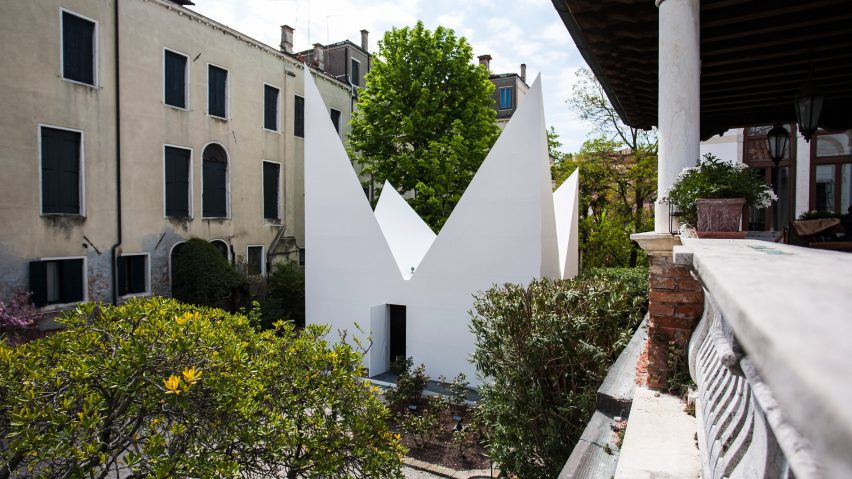
Stefano Boeri Architetti creates "paper lantern" pavilion at Venice Art Biennale
Italian studio Stefano Boeri Architetti has created a pavilion called Hanji House at this year's Venice Art Biennale with an angular, paper-clad form based on sculptures by Korean artist Chun Kwang Young.
Hanji House was designed by Stefano Boeri Architetti for a spot in the garden of the Palazzo Contarini Polignac, a palace overlooking Venice's Grand Canal.
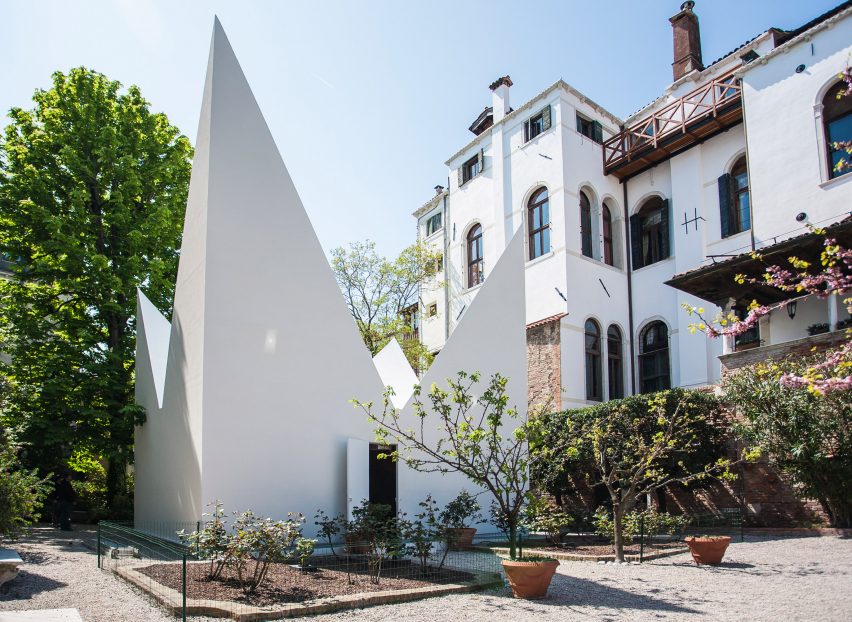
It is conceived as an enlarged version of Young's crystalline sculptures, which the artist terms "paper-tree architecture", currently displayed at the palace.
The sculptures are created using thousands of triangular packages of folded hanji – a traditional Korean form of paper handmade from mulberry trees from which the pavilion takes its name.
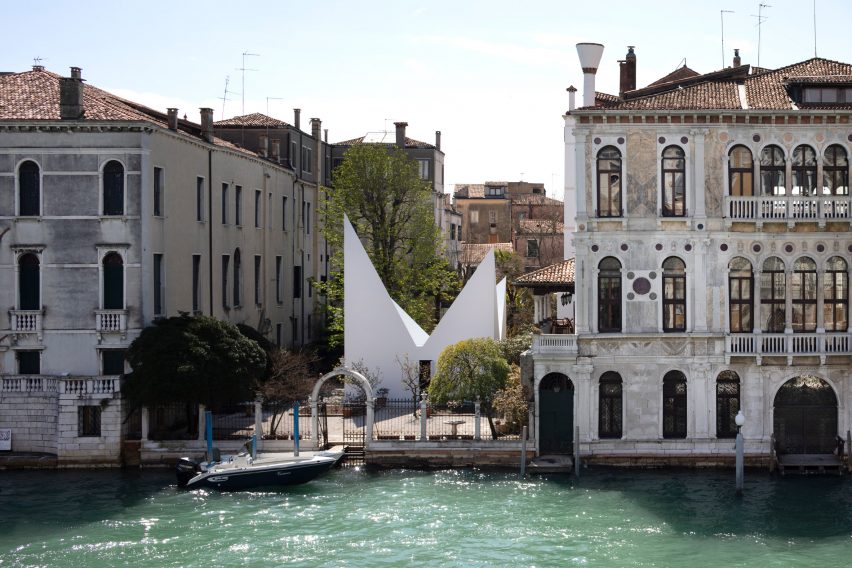
Constructed from laminated veneer lumber (LVL), the crown-shaped Hanji House is defined by four tall, thin pyramids at each corner. One pyramid stands two metres taller than the others to break the symmetry of the form and create a "lighthouse".
The whole pavilion is clad in hanji paper to create a crisp white appearance that becomes an almost translucent beacon at night.
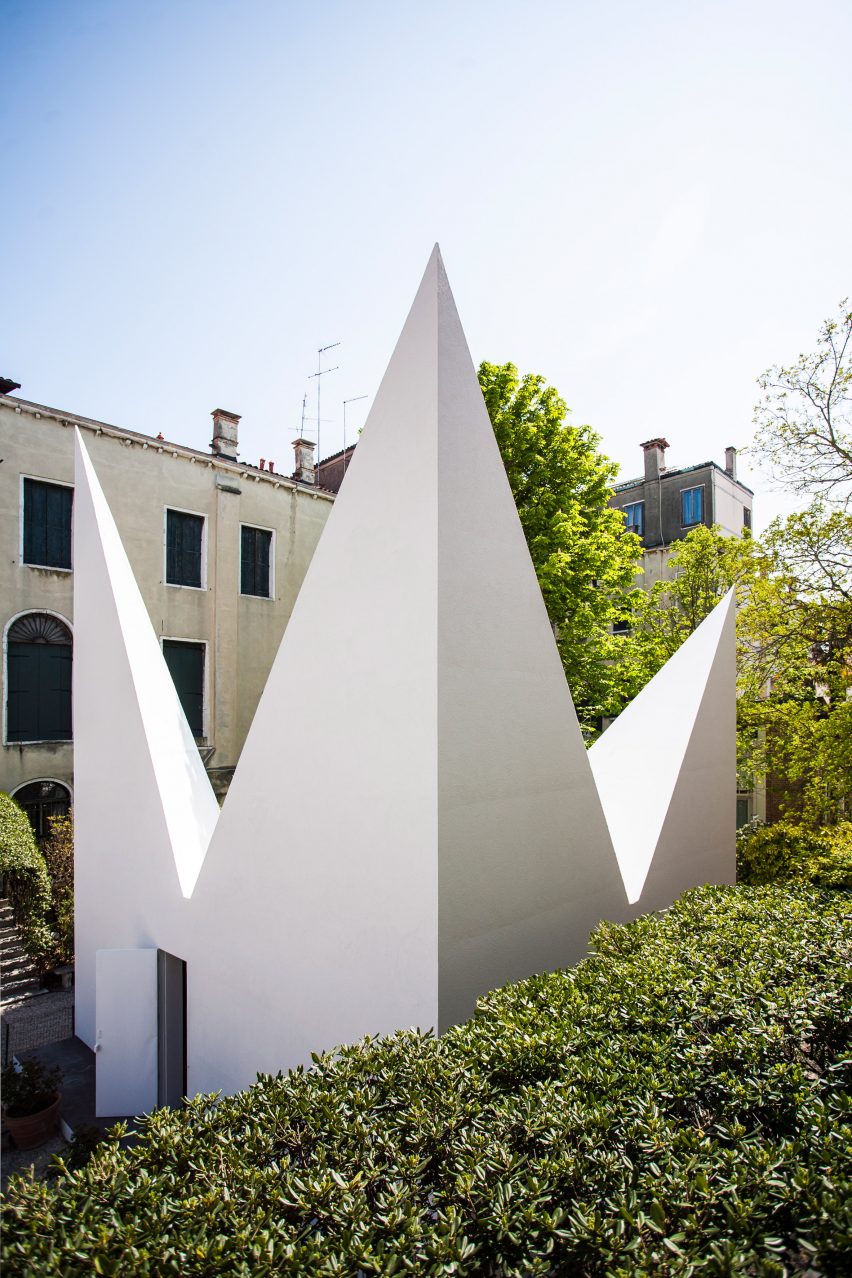
"[The pavilion's] shape and identity derive from the ancient, playful yet meditative oriental practice of folding paper in an infinite number of ways," said Stefano Boeri Architetti.
"The shape is reminiscent of the ancient practices of origami and tangram, as well as traditional Korean houses based on a simple geometric modularity," it continued.
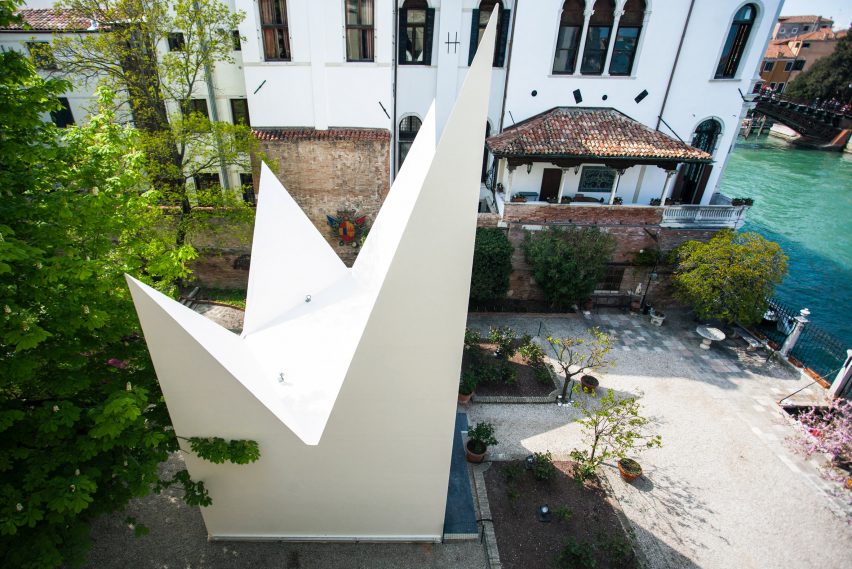
In addition to its visual connection to Young's sculptures, the pavilion has been designed as an abstract reference to the surrounding architecture of Venice.
"The entire pavilion evokes local forms, from the Gothic cathedral to the peculiar Renaissance style of the palaces, which wind their way from the Grand Canal to the inner part of the island," the studio said.
Inside the pavilion is a wooden bench where visitors can sit and observe an interactive video installation by Calvin J Lee, which sees virtual renderings of Young's hanji sculptures projected onto the walls.
The current location and use of Hanji House is intended as the "start of a longer journey" for the pavilion, with the structure designed to be disassembled, relocated or filled with different uses.
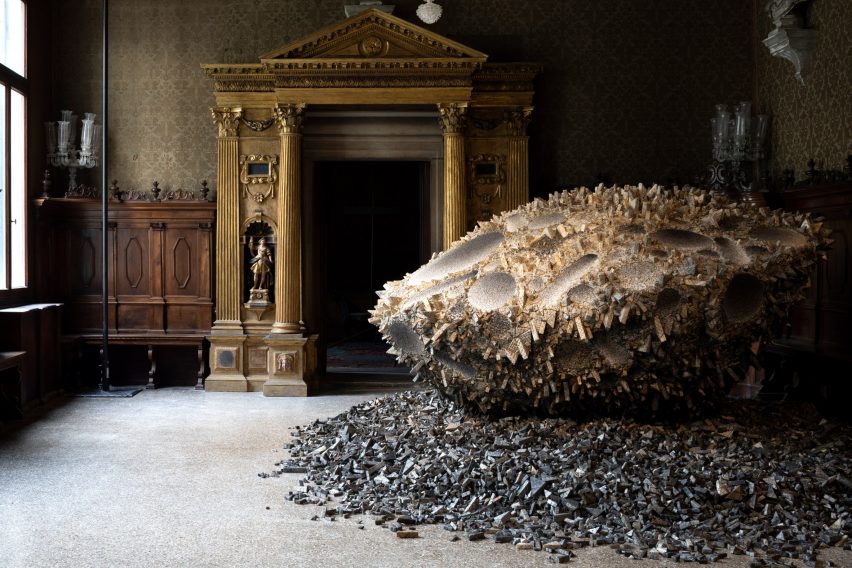
"Just like a lightweight paper lantern, Hanji House can be folded, moved and adapted to different contexts as easily as a sheet of paper, with countless transformation possibilities still to be explored," said the studio.
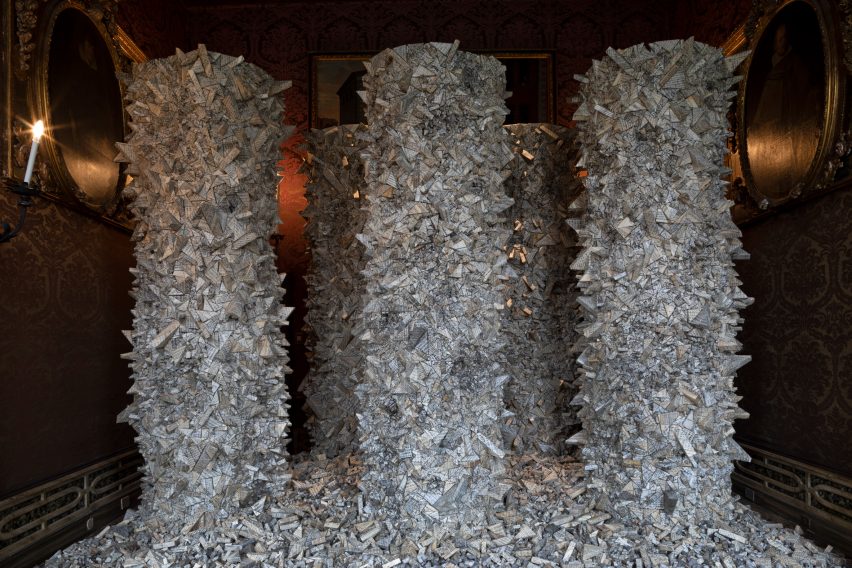
At the recent Milan Design Week, Stefano Boeri Architetti designed a floating forest pavilion for shoe brand Timberland to promote the idea of regreening urban areas.
Elsewhere, the studio recently completed the first of its vertical forest towers in China, having already built examples of the tree-covered skyscrapers in Milan and Eindhoven.
The photography is by Guoyin Jiang unless stated otherwise.